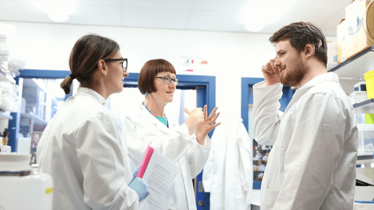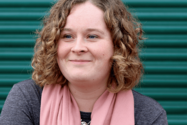Translating Science into Signs
One student’s mission to boost scientific sign language
Liam Mcmulkin, a second year life sciences student at the University of Dundee, UK, was facing a translational problem; as a deaf student, the dearth of complex scientific terms available in British Sign Language (BSL) was making life difficult. “My interpreter has to fingerspell words. Can you imagine sitting in a class, with your lecturer unable to pronounce complex scientific terms?” asks Mcmulkin. “They would have to speak out an individual letter a time. For example, D-E-O-X-Y-R-I-B-O-N-U-C-L-E-O-T-I-D-E. How frustrating would it be to have these complex terms spelled out individually over twenty times in an hour-long lecture? Also, fingerspelling can be misleading – deoxyribonucleotide and deoxyribonucleoside are spelled almost the same – and that could result in a potential hazard to students. The lack of complex scientific terms in BSL also means it’s rare to see users communicating with each other about science.”

Liam McMulkin using BSL in the lab.
So, Mcmulkin decided to do something about it and embarked on summer project, funded by the Robertson Trust’s Self-Development Award, to develop over 100 new signs for scientific jargon, which will be made available on the Scottish Sensory Centre website. But the impact could be wider, as the problem is not just a BSL one: “It’s a trending thing at the moment in the deaf community across the world,” says Mcmulkin. “I have a great connection with other deaf people internationally on social media, and people are talking about this problem. I also know there have been some events held this year across the world where deaf academics meet and talk about how to improve deaf people’s education, exchanging ideas. From this, I think more and more countries are setting up their own projects.”
“I rarely meet other deaf people with interests in science, and I believe it’s because deaf people have limited access to science education” Mcmulkim says. “For scientists – and BSL users in general – having signs for complex scientific terms means better communication between one another, making the exchange of information quicker and more accurate. After my workshop, I will able to talk via sign language about somitogenesis, immunoprecipitation, acrosome reaction, and so on, without having to rely on fingerspelling.”

I have an extensive academic background in the life sciences, having studied forensic biology and human medical genetics in my time at Strathclyde and Glasgow Universities. My research, data presentation and bioinformatics skills plus my ‘wet lab’ experience have been a superb grounding for my role as a deputy editor at Texere Publishing. The job allows me to utilize my hard-learned academic skills and experience in my current position within an exciting and contemporary publishing company.















